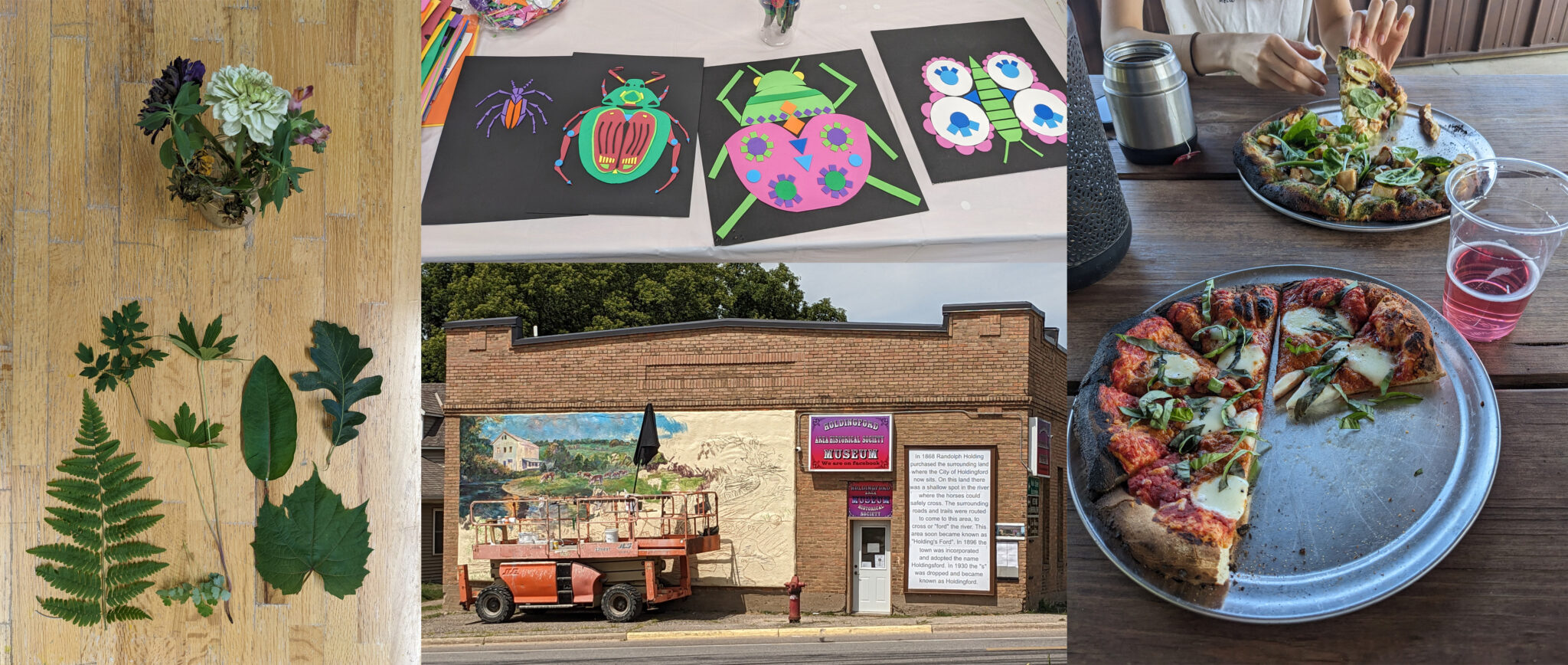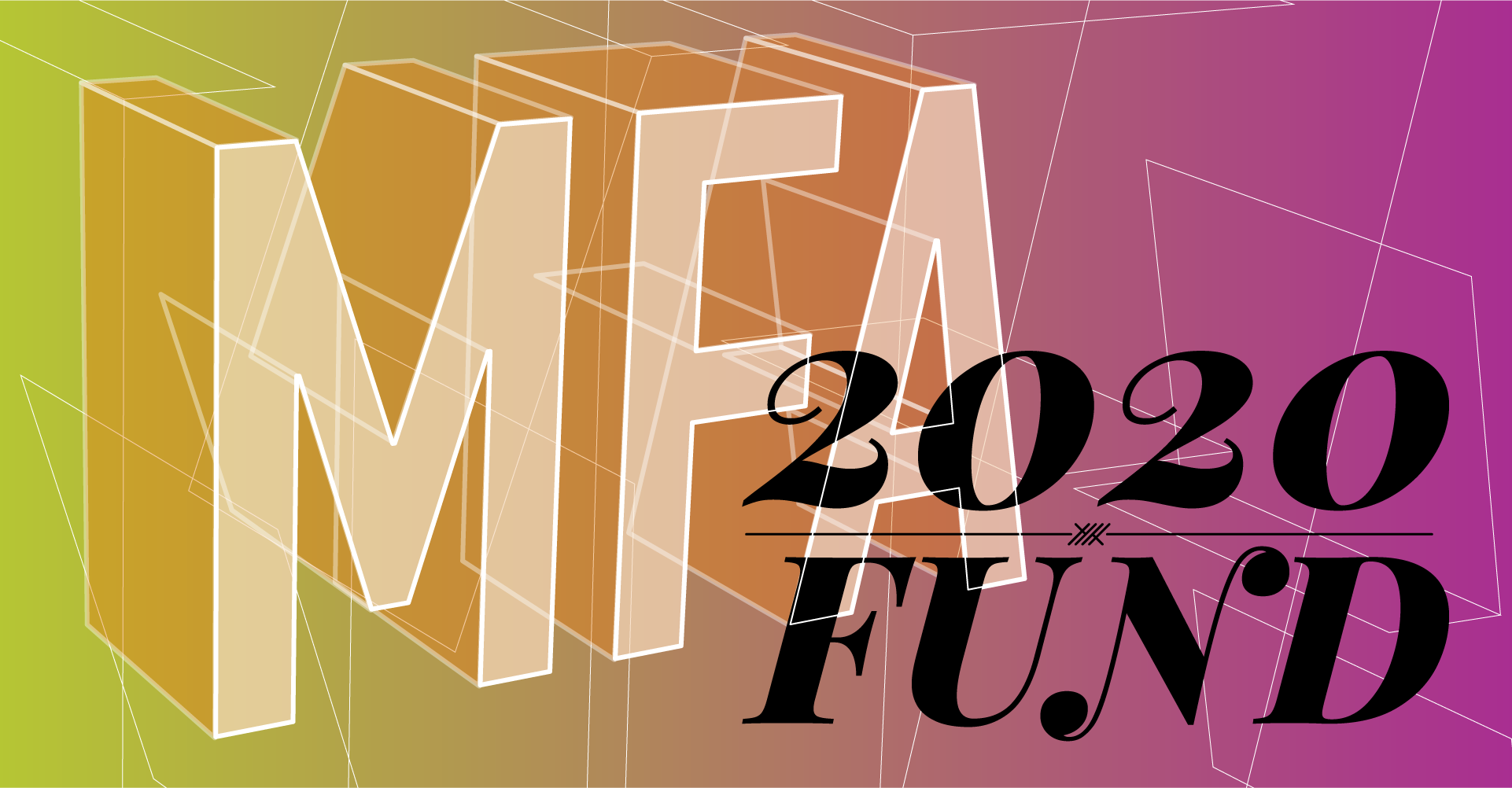For the past 5 years, the MCAD MFA program has partnered with other arts organizations to co-sponsor funded MFA Launch programs, providing opportunities for MFA students and alumni to create new work. This past summer, as part of the Launch program at Art in Motion, Holdingford MN, Liz Hilliard, MFA ‘24 and Malini Basu, MFA ‘24 participated in a two-week artist residency. They share their reflections on the experience in a conversational interview.
L: This was both your and my first artist residency! It was really special to experience that with you. I truly didn’t know what to expect, is there anything you wish you knew about this specific residency as you prepared that you could share with others?
M: I went into the residency not knowing how open-ended it would be! I expected to be tied to my project proposal but was pleasantly surprised to be given free rein. I kept some of the original ideas that I talked about in my application but it was nice being able to change the ways I explored to make my work more place-based. Did anything surprise you during the residency?
L: So much surprised me because the residency had such a minimal online presence, at least at the time we submitted proposals. For instance, we stayed in guest bedrooms in a lovely old farmhouse up a hill in the back of the property, where Michelle, a family member of the owners, was living. She was a fantastic host and really helped us feel at home. I would have also liked to have a better understanding that the space we were given was a gathering place for crafting, weekly community classes, cafe storage, and through which you could access the bathroom with a changing table.
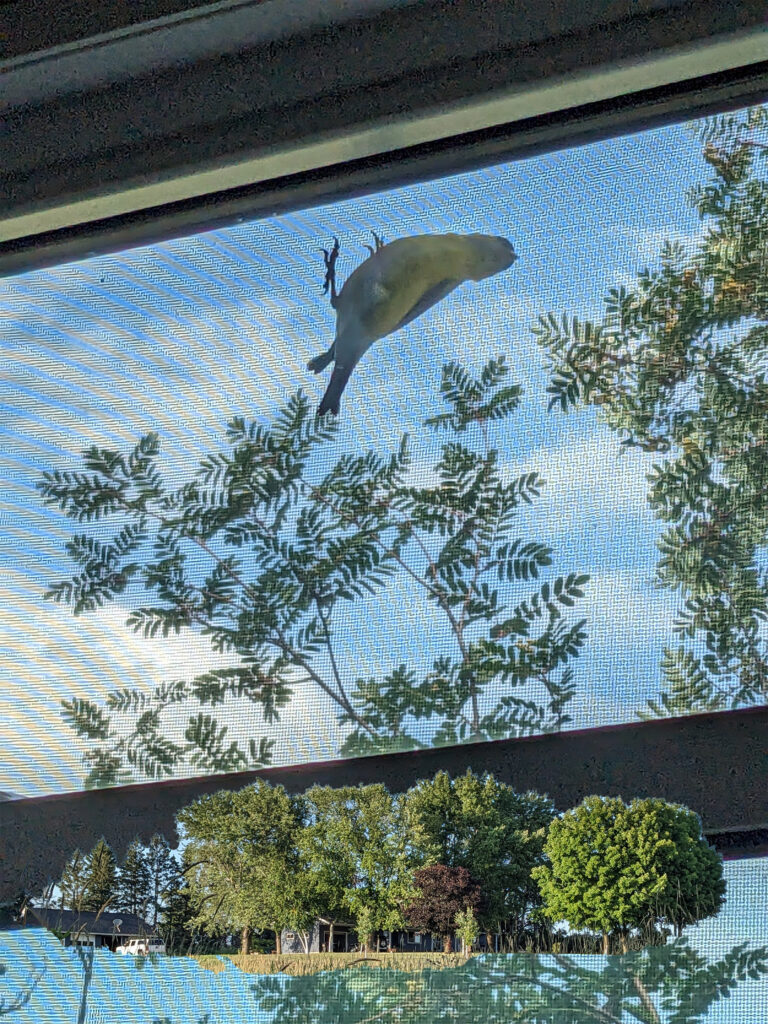
Digital photo collage by Liz, “A Bird in Apple’s Window”
M: On an artist residency you somewhat have to carry your studio with you – how did you adapt to not having access to all your supplies on hand, especially working on such a large scale?
L: That’s a great question, especially because I changed my plan while preparing for the residency and neither one of us have a car. My initial proposal heavily relied upon using a laser printer, which I later found I would not have access to. Instead, I planned to work on large-scale canvas paintings. I’d basically just need a roll of canvas and paints and would avoid the hassle of traveling with a large stretcher by buying lumber and building a stretcher in Holdingford. What I hadn’t researched was whether or not those supplies would be available in town (they were not). The short version of how things came together is that thankfully, I had the help of you and Lily Brutger (generous car-having Art Coordinator at Boho Cafe), as well as the option of mailing supplies. While it’s good for future residents to consider the option of mailing, I highly recommend coming with all supplies and sticking with a well-defined plan, or keeping your project open-ended enough to utilize the essentials that you bring with or what you may find in the area. Malini, your plan looked more like the latter option. How’d that work for you?
M: Yeah, I brought a bunch of supplies and unfinished projects with me – quilt patches, linoleum blocks, sketchbook – but I also wanted to respond to what I found at the residency. I spent a lot of time looking at weeds and sketching them as well as playing with the new Cricut machine that Art in Motion had recently purchased.
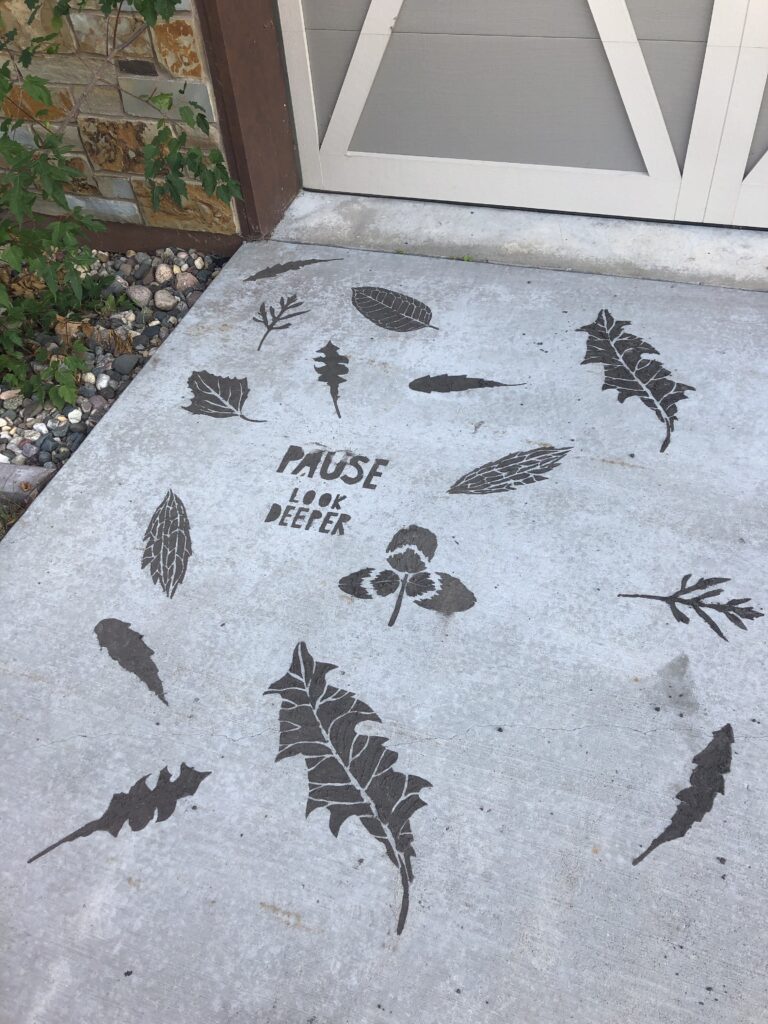
Photo by Malini of her mud stencils outside of the cafe.
M: Part of the luxury of an artist residency was the unscheduled time – did you create a new schedule? Did you have priorities in mind? Did you lean into the free-flowing nature?
L: I’m disabled, so to describe the loveliness of unscheduled time would be ironically laborious. Whenever I needed or desired I could rest, go biking, enjoy a meal, or get lost in my work. I didn’t know it would be this way, but my priority became being present in my body and with the land. I want to remember this time as best I can for the support and beauty it provided. I let my time remain unscheduled.
M: I actually think I ended up creating a new schedule for myself during the residency. We were lucky to have meals provided so I created loose blocks of work-time and outdoors-time around meals. I tried to leave the house fairly early in the morning but I also enjoyed being able to sleep in if I felt like it. I quite liked the bit of pressure that we had from being in a public facing studio – it gave me a bit of a push to be in there making art.
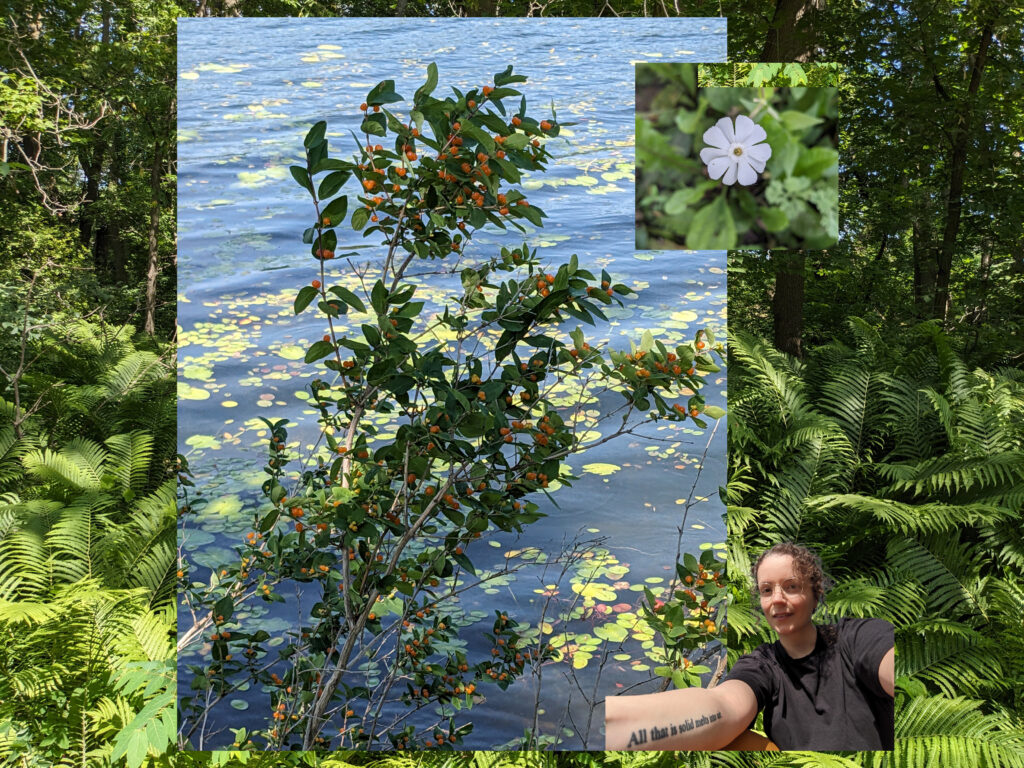
Digital photo collage by Liz, “Wobegon Trail Reflection”
M: Natural landscape – how did you make use of it? Near nature but also very contained and limited.
L: At the time, I used the landscape to keep me grounded as the paintings I was working on dealt with some form of ecological reference. While on the Lake Wobegon Trail I’d take a lot of pictures. I’m now using those as part of these collaged image transfer prints I’ve been making while in the MCAD MFA program. Making these prints on-site was part of my original proposal, but I need to be able to print my images from a laser printer, hence my plan change. Now they are functioning as retrospection. You used the natural landscape a lot more directly, would you like to talk about that?
M: I went into the Artist Motion expecting it to feel more remote and rustic, so I was surprised by the fully paved bike path and the modern barnhouse cafe. I tried to lean into the juxtaposition of the recently built infrastructure and the bits of untamed landscaping that popped up along paths by highlighting those weeds in my mud-stencil project.
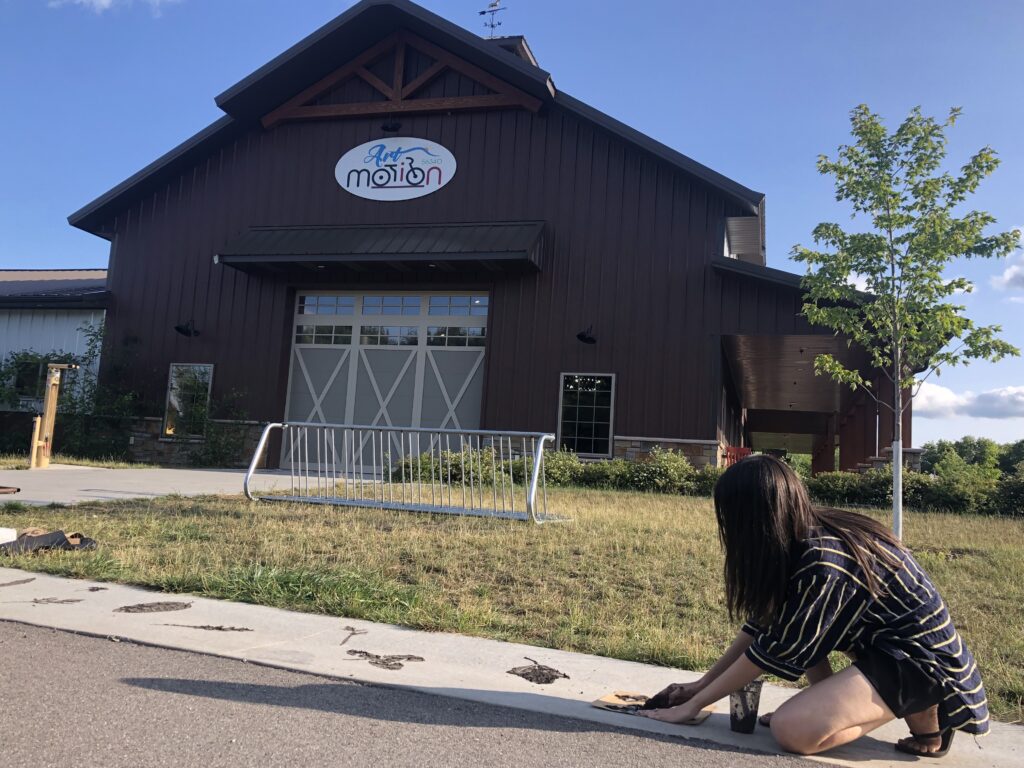
Malini applying mud stencils outside of the Cafe and Gallery.
M: Did anything change about the way you view your art practice now? I know you talked about wanting to make all your studio time at MCAD feel more like a residency.
L: Boy, did I ever wish to replicate my studio time at the Boho Cafe back at home. Like you mentioned earlier, the time we had there was abundant and unstructured; I realized that was a necessity to work in that manner. However, that time really did help me understand how my studio practice involves a lot of slow processing, followed by bursts of highly productive material manifestation. Figuring out how to integrate that into the dynamic life of a disabled graduate student is the current question I’ve been contending with. I’m glad to know this about myself as I consider other residencies.
M: I brought a bunch of half finished projects with me on my residency so I could switch between things. I’d love to replicate this flexibility during my own studio time and not feel restricted to working on a single project at a time.
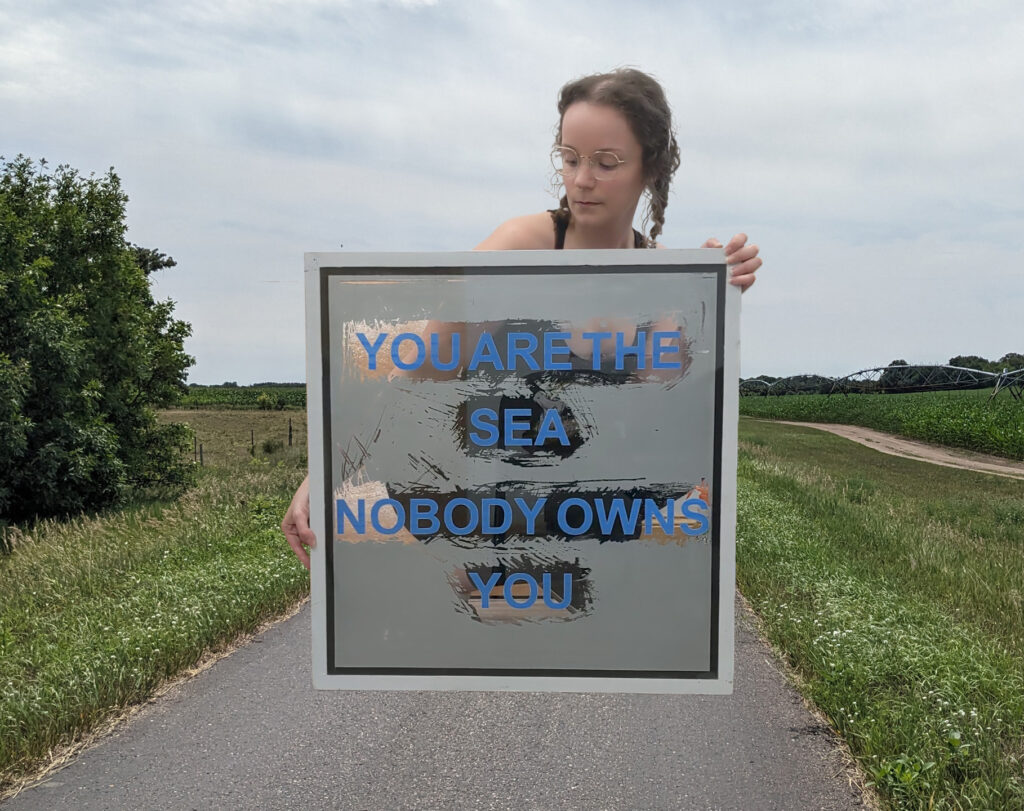
Digital photo collage by Liz, “You are the Sea.” The painting is a work-in-progress using lyrics from Deafheaven’s “Great Mass of Color.”
L: How has this experience influenced the way you approach other artist opportunities?
M: Experiencing dedicated time to work on a project was a luxury and I am leaning heavily towards applying towards more art opportunities in the future that allow me that time and space – residencies and opened-ended funding.
L: Likewise. The Art-in-Motion Residency was a fantastic way to wet the palate. Through this experience, I’m glad to have started building my residency vocabulary to better understand what is being offered and asked for during future application processes.
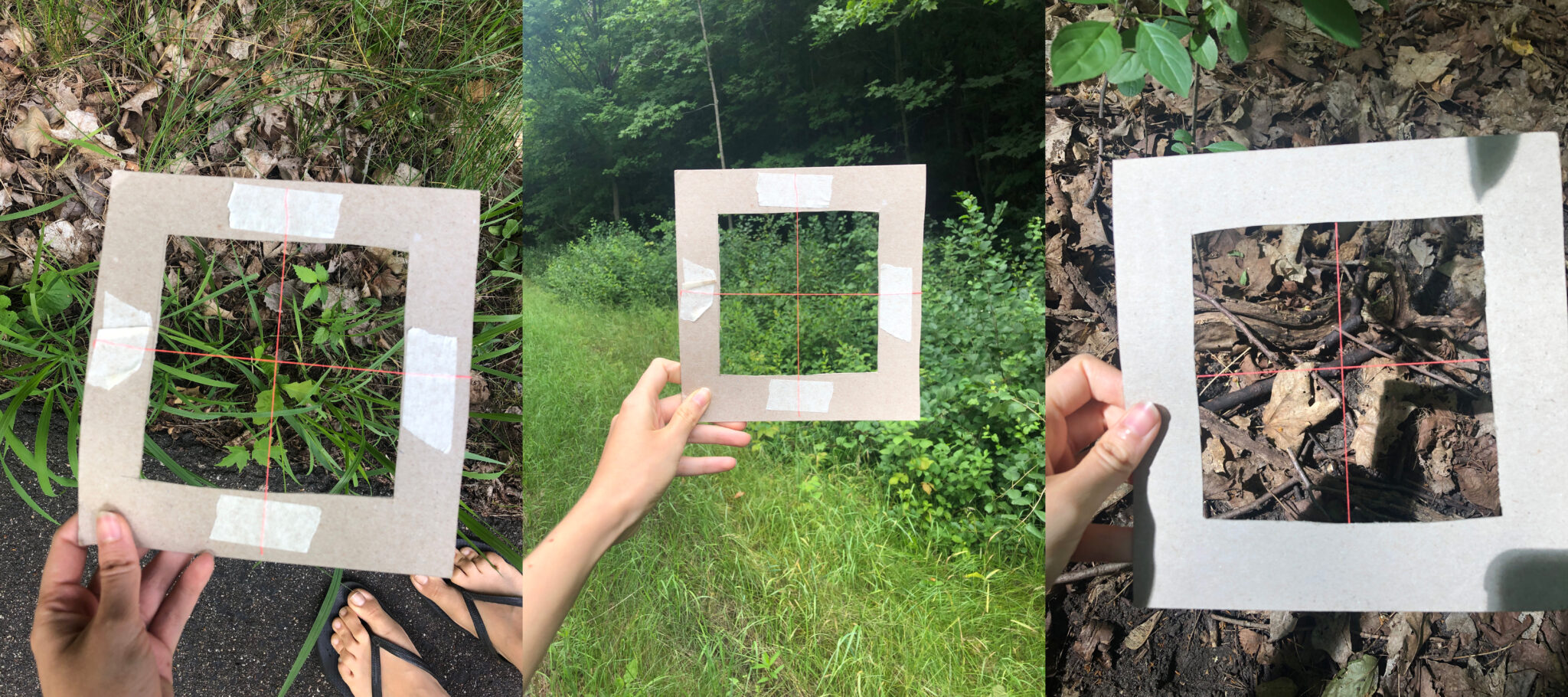
Malini using her viewfinder as a slow-looking technique for noticing around the Lake Wobegon Trail.
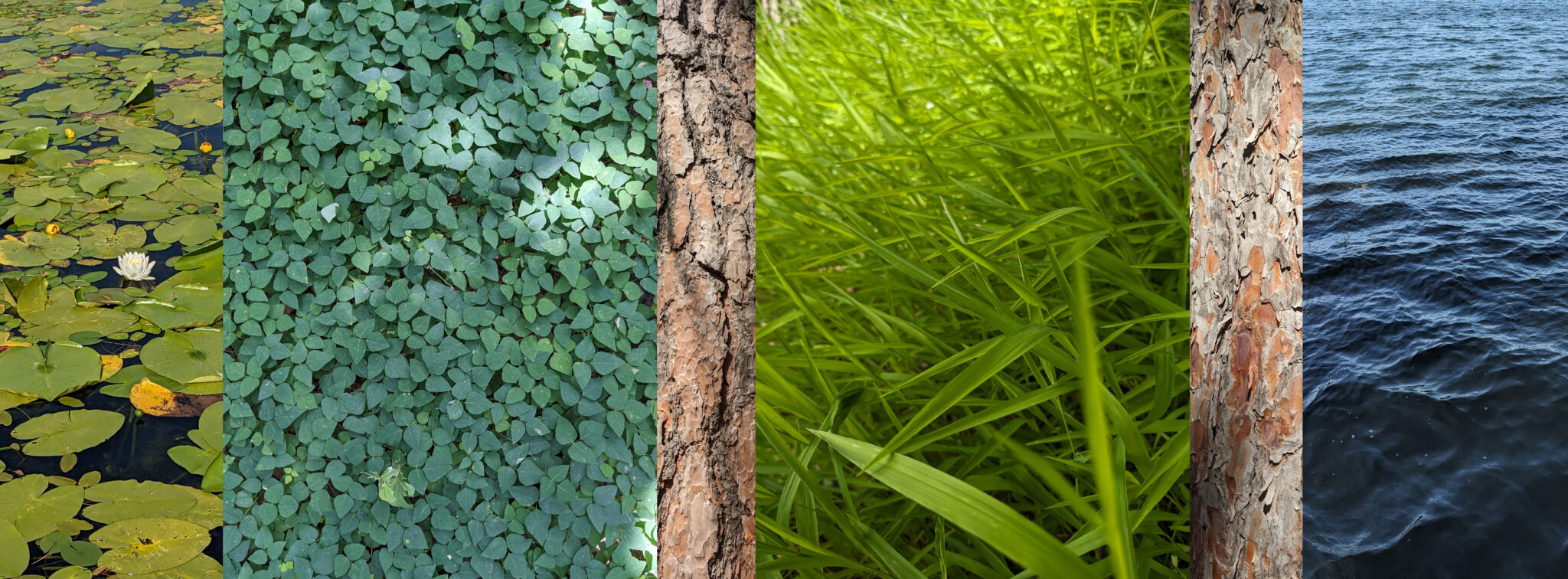
Digital photo collage by Liz, “Stella Maris Chapel Trail Textures”


